Key Takeaways
1. Recurrent Neural Networks (RNNs) enable sequence processing and prediction
Predicting the future is what you do all the time, whether you are finishing a friend's sentence or anticipating the smell of coffee at breakfast.
RNNs process sequences. Unlike feedforward neural networks, RNNs have connections that point backward, allowing them to maintain information about previous inputs. This makes them well-suited for tasks involving sequences of data, such as:
- Natural language processing (e.g., translation, sentiment analysis)
- Time series analysis (e.g., stock prices, weather forecasting)
- Speech recognition
- Video processing
RNNs can handle variable-length inputs and outputs. This flexibility allows them to work with sequences of arbitrary length, making them ideal for tasks where the input or output size may vary, such as machine translation or speech-to-text conversion.
2. RNNs use memory cells to preserve state across time steps
A part of a neural network that preserves some state across time steps is called a memory cell (or simply a cell).
Memory cells are the core of RNNs. These cells allow the network to maintain information over time, enabling it to process sequences effectively. The state of a cell at any time step is a function of:
- Its previous state
- The current input
Types of memory cells:
- Basic RNN cells: Simple but prone to vanishing/exploding gradient problems
- LSTM (Long Short-Term Memory) cells: More complex, better at capturing long-term dependencies
- GRU (Gated Recurrent Unit) cells: Simplified version of LSTM, often performing similarly
The choice of cell type depends on the specific task and computational constraints of the project.
3. Unrolling RNNs through time allows for efficient training
Unrolling the network through time, as shown in Figure 14-1 (right).
Unrolling simplifies RNN visualization and computation. When an RNN is unrolled, it resembles a feedforward neural network, with each time step represented as a layer. This unrolled representation:
- Makes it easier to understand the flow of information through the network
- Allows for efficient computation using matrix operations
- Facilitates the application of backpropagation for training
Two main approaches to unrolling:
- Static unrolling: Creates a fixed-length unrolled network
- Dynamic unrolling: Uses TensorFlow's dynamic_rnn() function to handle variable-length sequences more efficiently
Dynamic unrolling is generally preferred for its flexibility and memory efficiency, especially when dealing with long or variable-length sequences.
4. Handling variable-length sequences requires special techniques
What if the input sequences have variable lengths (e.g., like sentences)?
Padding and masking. To handle variable-length input sequences:
- Pad shorter sequences with zeros to match the length of the longest sequence
- Use a mask to indicate which elements are padding and should be ignored
Sequence length specification. When using TensorFlow's dynamic_rnn() function:
- Provide a sequence_length parameter to specify the actual length of each sequence
- This allows the RNN to process only the relevant parts of each sequence
Output handling. For variable-length output sequences:
- Use an end-of-sequence (EOS) token to mark the end of the generated sequence
- Ignore any outputs past the EOS token
These techniques allow RNNs to efficiently process and generate sequences of varying lengths, which is crucial for many real-world applications like machine translation or speech recognition.
5. Backpropagation through time (BPTT) is used to train RNNs
To train an RNN, the trick is to unroll it through time (like we just did) and then simply use regular backpropagation.
BPTT extends backpropagation to sequences. The process involves:
- Forward pass: Compute outputs for all time steps
- Compute the loss using a cost function
- Backward pass: Propagate gradients back through time
- Update model parameters using computed gradients
Challenges with BPTT:
- Vanishing gradients: Gradients can become very small for long sequences, making it difficult to learn long-term dependencies
- Exploding gradients: Gradients can grow exponentially, leading to unstable training
Solutions:
- Gradient clipping: Limit the magnitude of gradients to prevent explosion
- Using more advanced cell types like LSTM or GRU
- Truncated BPTT: Limit the number of time steps for gradient propagation
Understanding and addressing these challenges is crucial for effectively training RNNs on real-world tasks.
6. RNNs can be applied to various sequence tasks like classification and time series prediction
Let's train an RNN to classify MNIST images.
Sequence classification. RNNs can be used to classify entire sequences:
- Example: Sentiment analysis of text
- Process: Feed the sequence through the RNN and use the final state for classification
Time series prediction. RNNs excel at predicting future values in a time series:
- Example: Stock price prediction, weather forecasting
- Process: Train the RNN to predict the next value(s) given a sequence of past values
Image classification with RNNs. While not optimal, RNNs can be used for image classification:
- Process: Treat each image as a sequence of rows or columns
- Performance: Generally outperformed by Convolutional Neural Networks (CNNs) for image tasks
The versatility of RNNs allows them to be applied to a wide range of sequence-based problems, making them a valuable tool in a machine learning practitioner's toolkit.
7. Advanced RNN architectures address limitations of basic RNNs
The output layer is a bit special: instead of computing the dot product of the inputs and the weight vector, each neuron outputs the square of the Euclidian distance between its input vector and its weight vector.
LSTM and GRU cells. These advanced cell types address the vanishing gradient problem:
- LSTM: Uses gates to control information flow and maintain long-term dependencies
- GRU: Simplified version of LSTM with fewer parameters
Bidirectional RNNs. Process sequences in both forward and backward directions:
- Capture context from both past and future time steps
- Useful for tasks like machine translation and speech recognition
Encoder-Decoder architectures. Consist of two RNNs:
- Encoder: Processes input sequence into a fixed-size representation
- Decoder: Generates output sequence from the encoded representation
- Applications: Machine translation, text summarization
Attention mechanisms. Allow the model to focus on relevant parts of the input:
- Improve performance on long sequences
- Enable better handling of long-term dependencies
These advanced architectures have significantly expanded the capabilities of RNNs, allowing them to tackle increasingly complex sequence-based tasks with improved performance.
Last updated:
FAQ
What's Hands-On Machine Learning with Scikit-Learn and TensorFlow about?
- Practical Guide: The book offers a hands-on approach to learning machine learning, focusing on practical applications using Scikit-Learn and TensorFlow.
- Comprehensive Coverage: It covers a wide range of topics, including both traditional machine learning and deep learning techniques.
- Real-World Applications: The author, Aurélien Géron, includes numerous examples and exercises to apply concepts in real-world scenarios.
Why should I read Hands-On Machine Learning with Scikit-Learn and TensorFlow?
- Beginner-Friendly: Designed for readers with varying levels of expertise, making it accessible for beginners while providing depth for advanced users.
- Up-to-Date Content: Includes the latest developments in machine learning and deep learning, ensuring relevance and currency.
- Hands-On Exercises: Each chapter includes exercises that reinforce learning, allowing readers to apply what they’ve learned immediately.
What are the key takeaways of Hands-On Machine Learning with Scikit-Learn and TensorFlow?
- Foundational Concepts: Readers will grasp essential machine learning concepts, including supervised and unsupervised learning, model evaluation, and feature engineering.
- Practical Implementation: The book provides guidance on implementing machine learning models using Scikit-Learn and TensorFlow, with code examples and detailed explanations.
- Advanced Techniques: Introduces advanced topics like deep learning, reinforcement learning, and autoencoders, equipping readers with a broad skill set.
What are the best quotes from Hands-On Machine Learning with Scikit-Learn and TensorFlow and what do they mean?
- "Machine Learning is the science (and art) of programming computers so they can learn from data.": Highlights the dual nature of machine learning as both a scientific discipline and a creative process.
- "Don’t jump into deep waters too hastily.": Advises mastering foundational concepts before diving into advanced topics like deep learning.
- "Garbage in, garbage out.": Emphasizes the critical importance of data quality in machine learning.
How does Hands-On Machine Learning with Scikit-Learn and TensorFlow define overfitting and underfitting?
- Overfitting: Occurs when a model learns the training data too well, capturing noise and outliers, leading to poor generalization on unseen data.
- Underfitting: Happens when a model is too simple to capture the underlying patterns in the data, resulting in poor performance on both training and test sets.
- Balancing Act: The book provides strategies to achieve the right balance between overfitting and underfitting.
What is the difference between supervised and unsupervised learning in Hands-On Machine Learning with Scikit-Learn and TensorFlow?
- Supervised Learning: Involves training a model on labeled data, where the desired output is known, used for tasks like classification and regression.
- Unsupervised Learning: Deals with unlabeled data, where the model identifies patterns or groupings without prior knowledge of the outcomes.
- Applications: Supervised learning is used when labels are available, while unsupervised learning is used for exploratory data analysis.
How does Hands-On Machine Learning with Scikit-Learn and TensorFlow explain the concept of feature engineering?
- Definition: Feature engineering is the process of selecting, modifying, or creating new features from raw data to improve model performance.
- Importance: Good features can significantly enhance model accuracy, while poor features can lead to suboptimal performance.
- Techniques: Discusses techniques like normalization, encoding categorical variables, and creating interaction features.
What is the curse of dimensionality as explained in Hands-On Machine Learning with Scikit-Learn and TensorFlow?
- High-Dimensional Space Challenges: Refers to phenomena that arise when analyzing data in high-dimensional spaces, making data points sparse.
- Impact on Model Performance: Models may struggle to generalize due to overfitting, as training instances become sparse and distant.
- Need for Dimensionality Reduction: Emphasizes the importance of dimensionality reduction techniques to combat these issues.
How does Hands-On Machine Learning with Scikit-Learn and TensorFlow approach neural networks?
- Introduction to Neural Networks: Provides a foundational understanding, explaining their structure and how they learn from data.
- Deep Learning Frameworks: Emphasizes the use of TensorFlow for building and training neural networks, with practical examples.
- Training Techniques: Discusses techniques like backpropagation and optimization algorithms for effective training.
What are the main types of neural networks discussed in Hands-On Machine Learning with Scikit-Learn and TensorFlow?
- Multi-Layer Perceptrons (MLPs): Foundational networks consisting of multiple layers of neurons, capable of learning complex functions.
- Convolutional Neural Networks (CNNs): Designed for processing grid-like data such as images, utilizing convolutional layers.
- Recurrent Neural Networks (RNNs): Tailored for sequential data, allowing information to persist across time steps.
What is transfer learning and how is it implemented in Hands-On Machine Learning with Scikit-Learn and TensorFlow?
- Concept of Transfer Learning: Involves reusing a pre-trained model on a new but related task, reducing training time and data requirements.
- Implementation Steps: Outlines steps like freezing lower layers and replacing the output layer to fit the new task.
- Practical Examples: Provides examples of using a model trained on a large dataset to classify a smaller dataset.
How does Hands-On Machine Learning with Scikit-Learn and TensorFlow address the vanishing and exploding gradients problem?
- Understanding the Problem: Vanishing gradients occur when gradients become too small, while exploding gradients happen when they become excessively large.
- Solutions Provided: Discusses solutions like appropriate weight initialization and activation functions that do not saturate.
- Batch Normalization: Highlights Batch Normalization as a technique to combat these problems, allowing for stable training.
Review Summary
Hands-On Machine Learning with Scikit-Learn and TensorFlow is widely praised as an excellent introduction to machine learning. Readers appreciate its comprehensive coverage, practical examples, and balanced approach to theory and application. The book is lauded for its clear explanations, hands-on exercises, and use of popular frameworks. Many consider it the best resource for beginners and intermediate learners in ML. While some find the deep learning sections challenging, most agree it's an invaluable reference for anyone interested in machine learning.
Similar Books
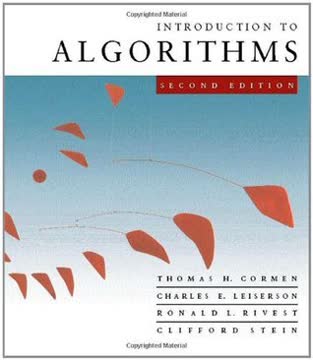
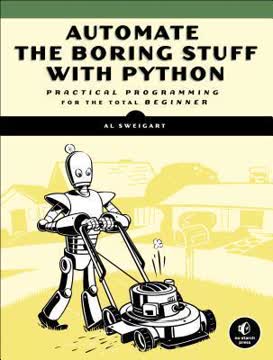
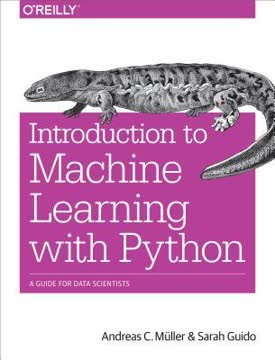
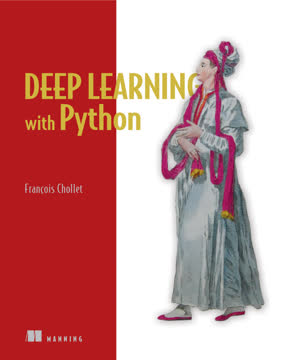

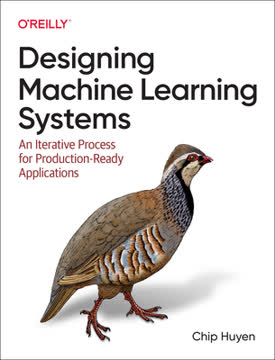
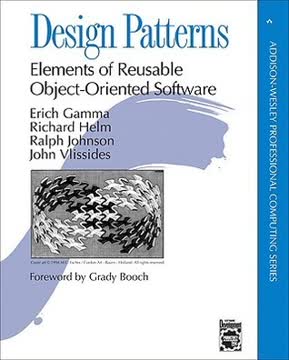
Download PDF
Download EPUB
.epub digital book format is ideal for reading ebooks on phones, tablets, and e-readers.




